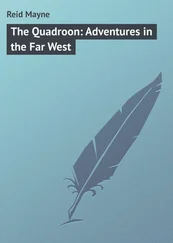Mayne Reid - Popular Adventure Tales
Здесь есть возможность читать онлайн «Mayne Reid - Popular Adventure Tales» — ознакомительный отрывок электронной книги совершенно бесплатно, а после прочтения отрывка купить полную версию. В некоторых случаях можно слушать аудио, скачать через торрент в формате fb2 и присутствует краткое содержание. Жанр: literature_19, foreign_antique, foreign_prose, foreign_children, на английском языке. Описание произведения, (предисловие) а так же отзывы посетителей доступны на портале библиотеки ЛибКат.
- Название:Popular Adventure Tales
- Автор:
- Жанр:
- Год:неизвестен
- ISBN:нет данных
- Рейтинг книги:3 / 5. Голосов: 1
-
Избранное:Добавить в избранное
- Отзывы:
-
Ваша оценка:
- 60
- 1
- 2
- 3
- 4
- 5
Popular Adventure Tales: краткое содержание, описание и аннотация
Предлагаем к чтению аннотацию, описание, краткое содержание или предисловие (зависит от того, что написал сам автор книги «Popular Adventure Tales»). Если вы не нашли необходимую информацию о книге — напишите в комментариях, мы постараемся отыскать её.
Popular Adventure Tales — читать онлайн ознакомительный отрывок
Ниже представлен текст книги, разбитый по страницам. Система сохранения места последней прочитанной страницы, позволяет с удобством читать онлайн бесплатно книгу «Popular Adventure Tales», без необходимости каждый раз заново искать на чём Вы остановились. Поставьте закладку, и сможете в любой момент перейти на страницу, на которой закончили чтение.
Интервал:
Закладка:
To Basil, Norman, and François, the thing was quite inexplicable, but Lucien understood well enough what it meant. All these creatures, he informed them, were placed there by the bird which François had shot, and which was no other than the “shrike” or “butcher-bird” – a name by which it is more familiarly known, and which it receives from the very habit they had just observed. Why it follows such a practice Lucien could not tell, as naturalists are not agreed upon this point. Some have asserted that it spits the spiders and other insects for the purpose of attracting nearer the small birds upon which it preys; but this cannot be true, for it preys mostly upon birds that are not insect-eaters, as the finches: besides, it is itself as fond of eating grasshoppers as anything else, and consumes large quantities of these insects.
The most probable explanation of the singular and apparently cruel habit of the butcher-bird is, that it merely places its victims upon the thorns, in order to keep them safe from ground-ants, rats, mice, raccoons, foxes, and other preying creatures – just as a good cook would hang up her meat or game in the larder to prevent the cats from carrying it off. The thorny tree thus becomes the storehouse of the shrike, where he hangs up his superfluous spoil for future use, just as the crows, magpies and jays, make their secret deposits in chinks of walls and the hollows of trees. It is no argument against this theory, that the shrike sometimes leaves these stores without returning to them. The fox, and dog, as well as many other preying creatures have the same habit.
Wondering at what they had seen, the voyageurs returned to their camp, and once more embarked on their journey.
CHAPTER XX.
THE FISH-HAWK
A few days after, another incident occurred to our voyageurs, which illustrated the habits of a very interesting bird, the “osprey,” or fish-hawk, as it is more familiarly known in America.
The osprey is a bird of the falcon tribe, and one of the largest of the genus – measuring two feet from bill to tail, with an immense spread of wing in proportion, being nearly six feet from tip to tip. It is of a dark brown colour above, that colour peculiar to most of the hawk tribe, while its lower parts are ashy white. Its legs and bill are blue, and its eyes of a yellow orange. It is found in nearly all parts of America, where there are waters containing fish, for on these it exclusively feeds. It is more common on the sea-coast than in the interior, although it also frequents the large lakes, and lives in the central parts of the continent during summer, when these are no longer frozen over. It is not often seen upon muddy rivers, as there it would stand no chance of espying its victims in the water. It is a migratory bird, seeking the South in winter, and especially the shores of the Great Mexican Gulf, where large numbers are often seen fishing together.
In the spring season these birds move to the northward, and make their appearance along the Atlantic coast of the continent, where they diffuse joy into the hearts of the fishermen – because the latter know, on seeing them, that they may soon expect the large shoals of herring, shad, and other fish, for which they have been anxiously looking out. So great favourites are they with the fisherman, that they would not knowingly kill an osprey for a boat-load of fish, but regard these bold fishing birds in the light of “professional brethren.” In this case the old adage that “two of a trade never agree” is clearly contradicted.
The farmer often takes up his gun to fire at the osprey – mistaking it for the red-tailed buzzard or some other hawk, several species of which at a distance it resembles – but, on discovering his mistake, brings down his piece without pulling trigger, and lets the osprey fly off unharmed. This singular conduct on the part of the farmer arises from his knowledge of the fact, that the osprey will not only not kill any of his ducks or hens, but that where he makes a settlement he will drive off from the premises all the hawks, buzzards, and kites, that would otherwise prey upon the poultry. With such protection, therefore, the osprey is one of the securest birds in America. He may breed in a tree over the farmer's or fisherman's door without the slightest danger of being disturbed in his incubation.
I say his incubation; but the male takes no part in this domestic duty, further than to supply his loved mate with plenty of fish while she does the hatching business. Of course, thus protected, the osprey is not a rare bird. On the contrary, fish-hawks are more numerous than perhaps any other species of the hawk tribe. Twenty or thirty nests may be seen near each other in the same piece of woods, and as many as three hundred have been counted on one little island. The nests are built upon large trees – not always at the tops, as those of rooks, but often in forks within twenty feet of the ground. They are composed of large sticks, with stalks of corn, weeds, pieces of wet turf, and then lined plentifully with dry sea-grass, or any other grass that may be most convenient.
The whole nest is big enough to make a load for a cart, and would be heavy enough to give any horse a good pull. It can be seen, when the woods are open, to an immense distance, and the more easily, as the tree upon which it is built is always a “dead wood,” and therefore without leaves to conceal it. Some say that the birds select a dead or decaying tree for their nest. It is more probable such is the effect and not the cause, of their building upon a particular tree. It is more likely that the tree is killed partly by the mass of rubbish thus piled upon it, and partly by the nature of the substances, such as sea-weed in the nest, the oil of the fish, the excrement of the birds themselves, and the dead fish that have been dropped about the root, and suffered to remain there; for when the osprey lets fall his finny prey, which he often does, he never condescends to pick it up again, but goes in search of another.
Boys “a-nesting” might easily discover the nest of the osprey; but were they inclined to despoil it of its three or four eggs (which are about the size of a duck's, and blotched with Spanish brown), they would find that a less easy task, for the owners would be very likely to claw their eyes out, or else scratch the tender skin from their beardless cheeks: so that boys do not often trouble the nest of the osprey.
A very curious anecdote is related of a negro having climbed up to plunder a nest of these birds. The negro's head was covered with a close nap of his own black wool, which is supposed by a certain stretch of fancy to have the peculiarity of “growing in at both ends.” The negro, having no other protection than that which his thick fur afforded him, was assailed by both the owners of the nest, one of which, making a dash at the “darkie's” head, struck his talons so firmly into the wool, that he was unable to extricate them, and there stuck fast, until the astonished plunderer had reached the foot of the tree. We shall not answer for the truthfulness of this anecdote, although there is nothing improbable about it; for certain it is that these birds defend their nests with courage and fury, and we know of more than one instance of persons being severely wounded who made the attempt to rob them.
The ospreys, as already stated, feed exclusively on fish. They are not known to prey upon birds or quadrupeds of any kind, even when deprived of their customary food, as they sometimes are for days on account of the lakes and rivers, in which they expected to find it being frozen over to a later season than usual. Other birds, as the purple grakles, often build among the sticks of the osprey's nest, and rear their young without being meddled with by this generous bird. This is an important point of difference between the osprey and other kinds of hawks; and there is a peculiarity of structure about the feet and legs of the osprey, that points to the nature of his food and his mode of procuring it. His legs are disproportionately long and strong. They are without feathers nearly to the knees. The feet and toes are also very long, and the soles are covered with thick, hard scales, like the teeth of a rasp, which enable the bird to hold securely his slippery prey. The claws, too, are long, and curved into semicircles, with points upon them almost as sharp as needles.
Читать дальшеИнтервал:
Закладка:
Похожие книги на «Popular Adventure Tales»
Представляем Вашему вниманию похожие книги на «Popular Adventure Tales» списком для выбора. Мы отобрали схожую по названию и смыслу литературу в надежде предоставить читателям больше вариантов отыскать новые, интересные, ещё непрочитанные произведения.
Обсуждение, отзывы о книге «Popular Adventure Tales» и просто собственные мнения читателей. Оставьте ваши комментарии, напишите, что Вы думаете о произведении, его смысле или главных героях. Укажите что конкретно понравилось, а что нет, и почему Вы так считаете.












